Choosing the best monitor calibrator can be difficult since there are so many different brands and models on the market.
Most people don’t know that their screen is not showing them what it should, which means they might not see things as accurately as possible. This can lead to confusion when working with colors or images.
The solution is simple! Use one of these top-rated monitors calibrators to ensure your screen shows you accurate colors. These products will help you get 100% confidence in your screen’s color display accuracy every time you use it.
You need to make sure that the colors on your screen are accurate. To do this, you will need the best monitor calibrator. Some monitors come with factory calibration, and others don’t. So check with a monitor calibrator before you buy one.
Table of Contents
The 07 Best Monitor Calibrator
| Image | Product | Details | Price |
|---|---|---|---|
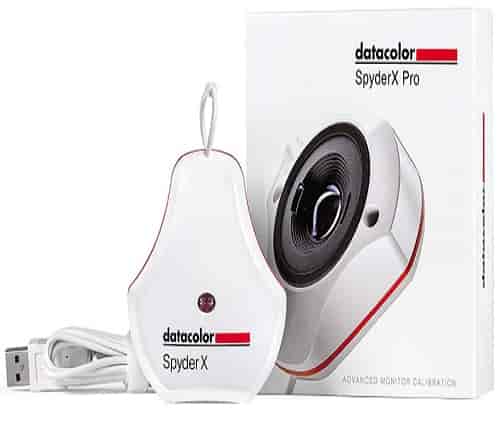 |
Datacolor SpyderX Pro | Brand: Datacolor Model: SpyderX Pro Batteries: No need Maximum Delta-E: 0.80 Ambient light Detector: Yes Operating System: Windows and Mac Dimensions: 7.62 x 7.62 x 4.45 cm Weight: 290g |
Check Price |
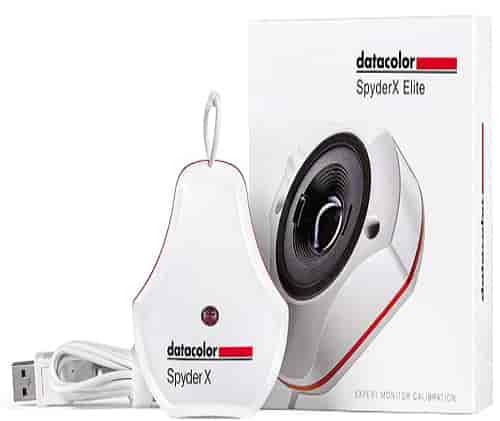 |
Datacolor SpyderX Elite | Brand: Datacolor Model: SpyderX Elite Batteries: No need Maximum Delta-E: 0.80 Ambient light detector: Yes Operating System: Windows and Mac Dimensions: 7.62 x 7.62 x 4.45 cm Weight: 290g |
Check Price |
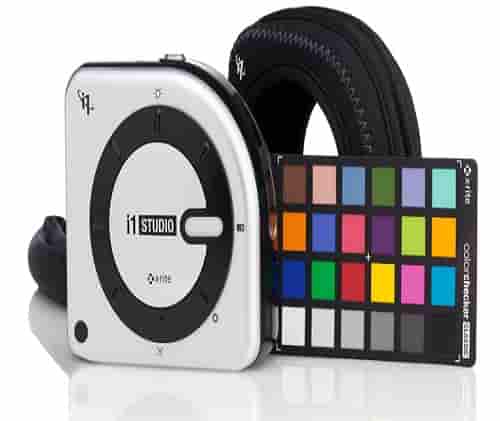 |
X-Rite i1Studio | Brand: X-Rite Model: i1Studio Batteries: No need Maximum Delta-E: 1.5 Software : Yes Operating System: Windows, Mac, iPadOS, iOS Dimensions: 19.28 x 14.2 x 15.49 cm Weight: 620 g |
Check Price |
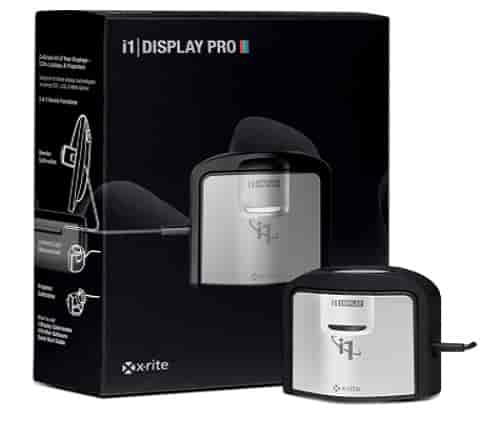 |
X-rite i1Display Pro | Brand: X-Rite Model: i1Display Pro Supported profile format: ICC Batteries: No need Maximum Delta-E: 1.5 Software: Yes Monitors supported per workspace: 4 Operating system: Windows, Mac, iPadOS, iOS Dimensions: 19.28 x 14.2 x 15.49 cm Weight: 269 g |
Check Price |
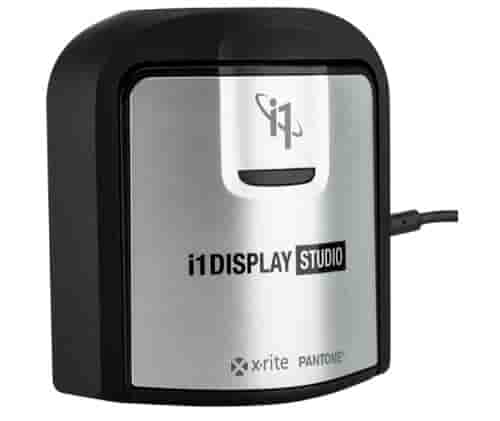 |
X-Rite i1Display Studio | Brand: X-Rite Model: i1Display Studio Batteries: No need Maximum Delta-E: 1.5 Software : Yes Monitors supported per workspace: 4 Operating system: Windows, Mac, iPadOS, iOS Dimensions: 19.28 x 14.2 x 15.49 cm Weight: 269 g |
Check Price |
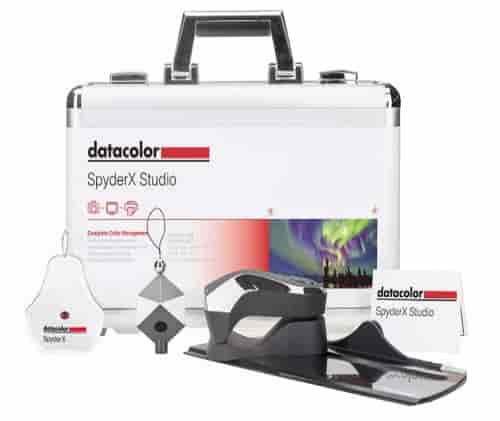 |
Datacolor SpyderX Studio | Brand: Datacolor Model: SpyderX Studio Batteries: No need Maximum Delta-E: 0.80 Ambient light detector: Yes Minimum focal length: 2.2 Compatible Monitors: Monitor, Apple iMac, Eizo, Benq Operating system: Windows and Mac Dimensions: SpyderX Studio Case (15.49 x 26.01 x 41.66 cm), SpyderX Elite (7.62 x 7.62 x 4.45 cm) Total weight of the complete pack: 1.13 kg |
Check Price |
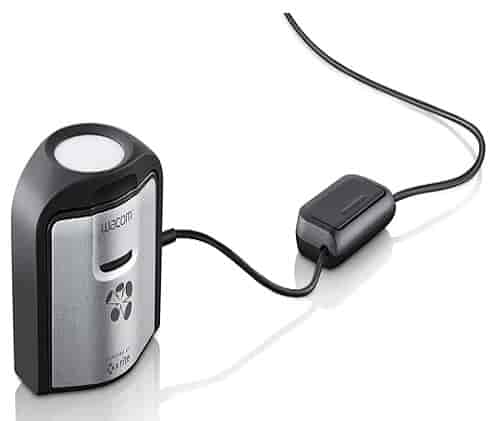 |
Wacom Color Manager (EODIS3-DCWA) | Batteries: No need Delta-E : 1.0 (~ 0.3). Operating system: Windows and Mac Dimensions: 3.9 x 6.45 x 6.6 cm Weight: 130 grams |
Check Price |
Choose the Best Monitor Calibrator for Your Needs
For those who need a monitor calibrator, there are many different options out there. However, not all of them will work as well as others for color-accurate monitors. Therefore, you need to know what type of monitor calibrator you want before you buy one.
To help you find the best monitor calibrator for your needs, we have picked seven monitor calibrators based on their performance and additional features that make them perfect for this type of work. Read below to see what each one offers in terms of specs and features before purchasing so you can get what you need without spending too much.
Datacolor SpyderX Pro – Best Monitor Calibration for Photographers
| Brand | : Datacolor |
| Model | : SpyderX Pro |
| Batteries | : No need |
| Maximum Delta-E | : 0.80 |
| Ambient light Detector | : Yes |
| Operating System | : Windows and Mac |
| Dimensions | : 7.62 x 7.62 x 4.45 cm |
| Weight | : 290g |
Datacolor has a new series of calibrators called the Spyder5. They are a lot faster and more accurate than the old ones. The best one for most people is the SpyderX Pro because it has good features and color matching.
The SpyderX range is characterized by a 3 lens system that allows greater precision in the calibration process. The lenses are good for telling the difference between colors, especially in the lightest and darkest places. This is important because new display advanced models have wider range of color profiles to measure, so they need a better advanced color accuracy solution.
The SpyderX range is better than the last one. The scan time is shorter. It only takes 2 minutes to calibrate some, and it can take just 1 minute in others (it took me 1 minute and 14 seconds).
This Best Monitor Calibration for Photographers is the fastest on this list. It is a huge advantage because you can keep up with the frequency of calibrating your screen. You don’t feel like it’s a tedious task when it is so short.
The SpyderX Pro also has some advanced features. One of these is to detect the brightness in the room. It can suggest how you should set up your display when it detects a difference in how people see things in different brightnesses.
Monitor Calibration for Photographers also has something called multi-monitor support, which can match the color output of multiple monitors. Keep in mind that you cannot match the color of two very different quality monitors if one of them can’t achieve the colors from another monitor.
There are many good things about the SpyderX Pro. One of them is that it is easy to use.
If you want to customize the software, you will have to buy a different product called SpyderXP Elite. But most people can do what they need with the 12 options on this one. If you need more, download DisplayCAL for free, and it can help you calibrate your screen too!
Read here full analysis of this- Datacolor SpyderX Pro Monitor Calibrator.
Is the SpyderX Pro worth it?
The SpyderX Pro offers a combination of high calibration speed, extremely high precision, and broad compatibility that none of its competitors offer right now. This is why it is without a doubt the best monitor calibrator on the market.
Datacolor SpyderX Elite – Best Monitor Calibrator for Professionals
| Brand | : Datacolor |
| Model | : SpyderX Elite |
| Batteries | : No need |
| Maximum Delta-E | : 0.80 |
| Ambient light Detector | : Yes |
| Operating System | : Windows and Mac |
| Dimensions | : 7.62 x 7.62 x 4.45 cm |
| Weight | : 290g |
The SpyderX Elite is just like the SpyderX Pro, but it has special software. The software gives you access to advanced calibration options, professional color profiles for print, video, and cinema. You can also use it to calibrate your screen.
The SpyderX is just as good as the Pro version. It takes a similar amount of time to calibrate, and its lens system is just as accurate. The SpyderX also has an ambient light sensor, which allows you to adjust the monitor settings, not getting too dark because of ambient light influence.
The big difference between the SpyderX Pro and the Elite is that the Elite can be customized to professional color expert spaces, like sRGB, Adobe RGB, NTSC, and Rec 709. It is also compatible with professional video and cinema programs. The SpyderX Elite has two modes for calibration: One-click Calibration and Step-by-step Assistant. It also offers interactive help. The Spyder5EXPRESS from Datacolor is the best hardware for an entry-level calibrator.
This calibrator has a quick and easy single-click calibration. You only need to click a button, and then a wizard will help you with the rest of the process. It has 12 predefined calibration targets for color accuracy.
If you have multiple monitors, the StudioMatch tool can help. This can be very useful for people in design studios, printers, and production companies. The color engine technology on this monitor shows you more colors accurately on the screen.
You can make sure that your monitor and printer work together to show what you want as a print. Once they are calibrated, you will see the print on the screen and make sure it is right before printing. This saves time and money when testing prints.
Read here full discussion of this- Datacolor SpyderX Elite Monitor Calibrator.
Is the SpyderX Elite worth it?
If you want total control over the color correction on your monitor, SpyderX Elite is the best monitor calibrator. There are many options, and it is easy to handle.
X-Rite i1Studio – The Best all-in-one Calibrator
| Brand | : X-Rite |
| Model | : i1Studio |
| Batteries | : No need |
| Maximum Delta-E | : 1.5 |
| Ambient light Detector | : Yes |
| Operating System | : Windows, Mac, iPadOS, iOS |
| Dimensions | : 19.28 x 14.2 x 15.49 cm |
| Weight | : 620 g |
The i1Studio is a new calibrator from X-Rite. It can calibrate different devices in your workflow, including monitors and mobile devices (including tablets) to cameras, scanners, printers, or projectors. This way, you get control over the capture of images up to final printing.
Inside monitors, you can calibrate those that are highly reflective. The monitor will do this. It measures the level of reflection and compensates for the calibration. This doesn’t change the color on your device at a system level; it only corrects how your screen looks when you open a file in a gallery called ColorTrue.
On the other hand, the X-Rite i1Studio includes a plug-in that helps you with Adobe Lightroom. It also supports some professional color standards. The calibration takes less than 5 minutes and is long enough to be acceptable.
If you like the i1Studio, but would like it to be faster, take a look at the X-Rite I1 Display Pro. This monitor has less than 2 minute calibration times and also has an ambient light sensor. This calibrates for how the color changes when there is more ambient light.
Is the X-Rite i1Studio worth it?
Being able to calibrate several devices in your workflow with a single device, the i1Studio is a great saving of time, money, and space. As an alternative, Datacolor has the SpyderX Studio (analyzed in this guide), a pack that includes specific tools to calibrate each type of device.
X-rite i1 Display Pro – Best Color Calibration Tool
| Brand | : X-Rite |
| Model | : i1Display Pro |
| Batteries | : No need |
| Maximum Delta-E | : 1.5 |
| Software | : Yes |
| Operating System | : Windows, Mac, iPadOS, iOS |
| Dimensions | : 19.28 x 14.2 x 15.49 cm |
| Weight | : 269 g |
| Supported profile format | : ICC |
The X-Rite i1Display Pro monitor calibrator is an accessory that helps you improve the speed of your calibration. It can take less than two minutes to calibrate your screen.
Although it belongs to a previous series, the i1Studio is still a very important calibrator to consider. This best color calibration tool has good performance, and you can configure it in your way. The price is much lower than that of the last X-Rite model.
The X-Rite I1Profiler software in the i1Display Pro offers advanced features not available in the X-Rite Display Studio or the new X-Rite i1Studio. This makes it possible to set a range of brightness, gamma, and white balance point with more precise options.
This software is a little more complicated than SpyerX, especially the advanced options. It’s not as easy to use. If you don’t want to complicate yourself, you should just use the basic mode.
Another great part of this software is that it has an ambient light meter that compensates colors based on where you place your device to calibrate it with light from the room.
Is the X-Rite i1Display Pro worth it?
This calibrator is good. It has a low price, so it is attractive to people. But this is a pre-generation of the i1Studio and might not work on newer displays. This means that it isn’t perfect, but otherwise, it’s really good.
X-Rite i1Display Studio – Cheap Monitor Calibration Tool
| Brand | : X-Rite |
| Model | : i1Display Studio |
| Batteries | : No need |
| Maximum Delta-E | : 1.5 |
| Software | : Yes |
| Operating System | : Windows, Mac, iPadOS, iOS |
| Dimensions | : 19.28 x 14.2 x 15.49 cm |
| Weight | : 269 g |
| Monitors supported per workspace | : 4 |
The X-Rite i1Display Studio is the previous model of the i1Studio. The calibration speeds are very similar. But the main difference is that the newer one, i1Studio, has a lens system that can capture more color nuances, especially at higher dynamic ranges.
This makes the i1Studio more suitable for modern monitors. If you have an HDR screen, this cheap monitor calibration tool is important to check to see if this product will work with your screen.
For those who love to perfect their color, i1Display Studio delivers incredibly consistent color and accurate colors with zero stress. It’s easy-to-use wizard-driven software that makes calibrating monitors or projectors a snap!
Allows for profiling multiple devices at once on glossy screens as well so you can always be sure your custom profile will match up properly without any more headaches from trying different solutions only find yourself constantly going back into calibration settings just because something wasn’t done correctly last time around – not any more thanks to this product by BenQ & Eizo which comes complete in an exclusive EDIS package 3 review copies available.
Is the X-Rite i1Display Studio worth it?
If your monitor is a few years old but still in perfect shape, the i1Display Studio will provide you with optimal calibration for a much more affordable price than the X-Rite i1Studio or the i1Display Pro.
Datacolor SpyderX Studio – Best Monitor Calibration Tool
| Brand | : Datacolor |
| Model | : SpyderX Studio |
| Batteries | : No need |
| Maximum Delta-E | : 0.80 |
| Ambient light detector | : Yes |
| Operating System | : Windows and Mac |
| Dimensions | : SpyderX Studio Case (15.49 x 26.01 x 41.66 cm), SpyderX Elite (7.62 x 7.62 x 4.45 cm) |
| Weight | : 1.13 kg |
| Monitors supported per workspace | : 4 |
| Minimum focal length | : 2.2 |
| Compatible monitors | : Monitor, Apple iMac, Eizo, Benq |
The Datacolor SpyderX Studio is a suite of devices that allow you to calibrate the color of your work. This best monitor calibration Tool will help match all your devices to each other.
The SpyderX Studio is for photographers, designers, and video professionals. It includes 3 devices that help with calibration:
- SpyderCube: The SpyderCube is a small, pocket-sized device that helps people take pictures with better lighting. The Spyder Cube makes it easier to adjust settings on RAW images taken in different light conditions.
- SpyderX Elite: It is the professional monitor calibrator from Spyder, as we saw in this same guide.
- Spyder Print: Spyder Print is a device that helps your printer calibration. You can do this by analyzing a printed sheet.
Added to all of this is the SpyderX Elite calibration software. It has many professional adjustments. You can also change your video color profile to one of these: sRGB, Adobe RGB, NTSC, and Rec 709.
The pack that we sell includes a case to store the devices. This is bulky, but since they have lenses and other fragile parts, it is best to keep them safe.
SpyderX Studio is worth it.
If you want to calibrate different devices, you can use an all-in-one device or a specific device for each type. The SpyderX Studio is an all-in-one device that also has specific calibration devices for other types of devices. It is faster and more accurate than using individual calibration devices.
Wacom Color Manager (EODIS3-DCWA) – Best Budget Monitor Calibration Tool
| Brand | : Wacom |
| Model | : EODIS3-DCWA |
| Batteries | : No need |
| Maximum Delta-E | : 1.0 (~ 0.3). |
| Ambient light detector | : Yes |
| Operating System | : Windows and Mac |
| Dimensions | : 3.9 x 6.45 x 6.6 cm |
| Weight | : 130 grams |
The Wacom Color Manager is a screen calibrator for the Cintiq and Wacom MobileStudio Pro display graphics tablets.
Some monitor calibrators can calibrate Apple tablet displays. But there are not any for display graphics tablets, except for the Wacom Color Manager.
This best budget monitor calibration tool is a custom-made Wacom version of the i1Display Pro, X-Rite’s best monitor calibrator. It is quite easy to use if you are familiar with the brand and its X-Rite I Profiler calibration software.
Keep in mind that this is a specific product for tablets with a Wacom Cintiq and Wacom MobileStudio Pro screen. It does not guarantee results with monitors, tablets, or graphic tablets with screens from other brands.
Is the Wacom Color Manager worth it?
If you have a graphics tablet from the brand X-Rite, it is an excellent product manufactured by them. If you do not have this tablet, I am sorry, but this screen calibrator is not for you.
What is a Monitor Calibrator, and How Does It Work?
A monitor calibrator is a device that adjusts the colors on your computer screen. It does this by reading how the monitor colors are displayed, interpreting them to make sure they match what you see in real life, and adjusting accordingly. For example, if an image of a blue sky is displayed as purple because of incorrect calibration, it will change it back to its natural color.
This process can occur with hardware and software that attaches to your monitor or with programs like DisplayCAL, which can be downloaded online for free.
Have you ever struggled to produce your best work because of the way your monitor looks? A monitor calibrator can help. Monitor calibration ensures that the color, brightness, contrast, and other features are accurate on any given device so that creatives accurately represent what they are seeing.
The process begins with inserting a disc into the computer’s CD or DVD drive before setting up the screen for viewing. The calibrating software will then take over from there by measuring each pixel on display to make adjustments. This entire process should only take about 10 minutes to complete.
Read here- Best Anti Glare Screen Protector For Computer Monitor.
The benefits of having the best monitor calibrator
In today’s digital world, it is important to have your computer monitor calibrated. This will ensure that you see colors accurately and not being tricked by what your eyes see on the screen. It can be a time-consuming process but a necessary one.
However, with a professional calibrator who knows how to do this correctly in less than an hour, it can be done without any hassle at all. A qualified monitor calibrator will come into your office or studio and quickly go from station to station, ensuring that each color is displayed properly for everyone who needs to use it in their workday.
This ensures that graphic designers, print specialists, and photographers alike can. If you are looking for a way to ensure that your color presentation is predictable and consistent, consider investing in a professional monitor calibrator.
With one, you can work on an easily readable screen without any glare or reflections while also keeping colors true and accurate across all devices. All this means that when it comes time to print or present your final product, there won’t be any surprises waiting for you!
It’s important to note that these tools aren’t always necessary – but if you have been experiencing problems with clarity or consistency in your work area, this might be worth considering.
Read here- Best Monitor for CAD.
Who should buy this best monitor calibrator?
With the growing prevalence of digital photography, graphic design software, and gaming consoles, you must have a calibrated monitor. A good monitor calibrator will help create a neutral white color for your screen, which is important for creating accurate measurements on all screens.
You may be wondering who should buy this best monitor calibrator? If you are a photographer, graphic designer, gamer, or just someone who spends time on their computer, you need to invest in one of these items today!
They are easy to use and can provide an excellent user experience with your work and play. It’s as simple as plugging in the device and following the instructions.
With the proliferation of social media, more and more people are taking their photography seriously. And with that comes a realization that it can be even better if you take the time to properly calibrate your monitor.
Your capture device’s color calibration is important, but the color calibration on your computer display is too. The good news is there are plenty of ways to get your colors right- no matter what type of camera or software you use.
Factors to consider when buying the best monitor calibrator
A monitor calibrator is a device that adjusts your computer’s display for optimal color and contrast. When you’re looking for a new one, there are some important things to consider before making your purchase. Below we’ll go over those factors and explain how they can impact your decision process.
The first thing is the budget. The price range for these products can vary greatly, so it’s important to set aside an appropriate amount of money before looking at different models. The other factor would be what type of calibration system they have- one or two? Does it measure ambient light settings or just luminance? What kind of color gamut does it support?
What type of monitor do you have?
When deciding which calibration tool to purchase, it’s important to consider your needs and your type of monitor. There are many different types of monitors on the market, with each one featuring its advantages and disadvantages.
For example, if you have an older CRT-based display like a tube television or an old laptop screen, you should be looking for a calibration device that will work with these displays. If your monitor is newer and uses LCD technology (such as most laptops), there are specific calibration devices designed for this type of screen.
The first selection factor for choosing the best calibration tool is to look for the monitor you own so that you can.
Maximum Delta-E
The Delta E (ΔE) is a measure of the difference between two colors. The closer it is to zero, the less difference there is between the colors.
The closer the Delta E value is to 2.3, the more accurate colors will be when calibrating. When the ΔE is less than 2.3, you can’t see a difference in color with your eyes.
As we measure the screen, we can see how different it is from other screens. One way to show this is by looking at the Maximum Delta E. It’s a good way to show how different it might be from other screens.
| ΔE * | Precision |
|---|---|
| <1 | Excellent |
| 1 – 2 | Good |
| 2 – 4 | Normal |
| Four. Five | Enough |
| > 5 | Bad |
Calibration Speed
The speed of calibration is very important to maintain the periodicity of this practice. If a calibrator takes a long time, it will be difficult for you to find time to calibrate your monitor. This will make it easy for you not to keep up with periodic calibration.
Screen calibrators are important. You want one that is fast and is also good quality. The best screen calibrators can do this in less than 2 minutes. It is important to perform a calibration once a month or at least once every six months.
Ambient light detector
The ambient light detector is used for the screen calibrator to understand how you see the monitor’s colors. The screen calibrator can also see how bright or dark a place is.
The SpyderX Pro and Elite calibrators can make adjustments to your display settings based on the current light. Sometimes setting the brightness too high will make it hard to see what you are doing, which helps. There are five levels of adjustment that can be made depending on how much light is around you.
Compatibility
Some monitor calibrators work on mobile device separate displays. They can also calibrate projectors and printers. Each calibrator specifies the system specifications it needs to work right.
Advanced features
Within monitor calibrators, there are some with basic calibration options and others that have more advanced features.
Sometimes, the difference between one model and another is not about the product’s inside but in software. If you know about color calibration and want to have complete infinite control over that, then the advanced functions can be very useful. If not, you can do without them and save money on your purchase.
In any case, you can download software that will help to calibrate your screen. You can do this for free.
Choose a recognized brand.
Monitor calibration device requires that you know your device very well. So, for this reason, I recommend only using products from trusted brands.
Warranty
The warranty for these devices is between one and three years from the date of purchase. You need to register as a user on their website before you can activate the warranty.
Mark
Screen calibration is when you make sure your screen is set upright. You can do this with products from trusted brands like Datacolor, X-Rite, or Wacom.
Monitor Calibrator is Important in Printing
Monitor calibration is important for printing. You want your monitor and printer to be accurate so that the colors are perfect. There are two types of calibrators, one for monitors and another for printers. The monitor calibrator must be compatible with your monitor as well as the printer.
If you have a monitor colorimeter, you will not need to purchase a separate device since it can do both jobs at once! Making sure that you use the right type of calibrator is an important step when printing any document.
A monitor calibration tool for your work patterns
In selecting a monitor calibration tool, it is important to consider what kind of work you do. As the light monitoring around us affects the overall color gradation performance of monitors, we need to find a calibration tool that can process this direct light in accordance with our working conditions.
The best way to calibrate a monitor is by using software and hardware tools together. That way, brightness levels are adjusted automatically based on ambient lighting changes.
This will also help maintain uniformity from one screen to another and reduce eye strain when switching between different screens or tasks throughout the day. Main Point: For an individual’s eyes not to be strained by differences in contrast and brightness.
Price
You need to understand the price of a monitor calibration tool before you buy it. Some tools cost a lot, and there are cheaper ones. If you’re new, spend less money. Once you know more about how they work, you can buy a high-priced one with more features and makes it easier for you to use the tool.
Other issues to consider
Do you use multiple monitors?
Some people who do graphic publication work may use more than one screen and a laptop for their job. Before they can use these screens, they need to make sure that each one is calibrated. They should find a calibrator that can be used on multiple monitors, so all of them look the same.
The type of monitor you use and other things affect how well your screen displays color, black level, whites, viewing angle, contrast ranges, and many other things.
Do you make impressions?
Printing a lot of images for your work can be annoying. You have to do the same thing repeatedly to get the color you want, which is both time-consuming and expensive. This happens because the ink is expensive, and not only does it cost money for paper, but also ink. Adding up all that paper and ink will pay for a good calibrator or professional print services.
A good calibrator should help your prints come out better than if you don’t use one. But maybe you don’t want to complicate things by getting a calibration monitor on your computer, then look for printing services that already use calibration on their monitors to get the best possible result when printing an image.
Helpful Tips and Resources
Which calibrator is best for the monitor?
There are many different monitor calibrators on the market, but it can be difficult to know which one is best. Monitor calibrators are used to adjust display settings to optimize color reproduction and maintain accurate contrast.
This ensures that colors appear correctly when the viewer sees the image, rather than looking different from intended or with oversaturated or under-saturated colors. A good monitor calibrator will have a Delta E value of fewer than 2 minutes, be compatible with both printers and monitors, an ambient light detector and come with a warranty if possible.
The Delta E value measures how well each color displays on your screen while maintaining accuracy. It also comes in many different colors, so you can choose one that matches your office space!
The Proper Way to Calibrate Your Monitor
It’s important to calibrate your monitor for the best possible viewing experience. Here is a basic overview of what that entails and how to do it properly. A monitor calibration tool for professionals is a device that ensures your colors are properly displayed on the screen.
There are six presets optimized for different displays, such as LCD monitors with different resolutions or CRT TVs with different aspect ratios, which will help you save time selecting one most appropriate for your display type and size. You can also choose from various color advanced modes, including sRGB (for those who want their images as close as possible to what they would see on a print).
There are three ways to calibrate your monitor. The way you choose will depend on how much knowledge you have, your skill level, and what you need the monitor to do.
- Using a colorimeter: Using a colorimeter is the most professional way to do it. A colorimeter is like a camera that takes pictures of the screen while it tests colors. Then, when you are done testing colors, they create a profile for your monitor that they install on your computer. You want to use this when you change screens often because then the colors will always be accurate on them!
- Using software: this is a less professional way of doing things than the last way. But you do not need a colorimeter to calibrate your screen. A program shows us certain screens with color schemes and explains how they work. You can then adjust the values to image quality or reference color that looks good to you. This is less accurate than the other method since it depends on how you see things and what colors look best to you, rather than scientific research. These programs also create color profiles installed on your screen, so it looks good for everyone who uses it.
- Through a website: the process is just like it would be if you were using a program, but this time you will use your keyboard. Normally people don’t create profiles for websites, so it is just hardware calibration. The site has tests that will help you see if your monitor can work. The tests start with checking contrast and then the response time of the monitor.
- Directly: for this, we need to get an ICC profile made by another company. Then, we can put it on our system.
Can all monitors be calibrated?
The short answer to the question is yes; all monitors need calibration. But it won’t make a cheap monitor better. It tends to do the most good for monitors that are already quite good. Calibrating does not take hours or anything like it either. It takes about 10 or 15 minutes, which is less time than it takes for a cup of coffee (depending on how much you drink).
How to calibrate the monitor for more accurate colors?
You may not know that computer or laptop displays show colors differently than the original image quality. To fix this problem, you need to calibrate your screen in Windows. First, use physical buttons on the monitor to change settings back to “Factory Defaults.” Then go to the Start Menu and find the Control Panel. Change from “Small Icons” view to “Large Icons” and go to Color Management.
When you are changing your monitor’s color settings, change the level of “Gamma” first. You will need to get an image right in the middle of “Good Gamma,” which is at the middle of this sample. Click next and then tap on one of these bars to adjust it until you reach your desired result.
You need to fix the brightness and contrast levels. In the Windows guide, you will find an image of what it should look like. You can use the buttons on your monitor to go there, too. Fix any problems with it and make sure that you pay attention to the caption of photos that have details about fixing them.
If you want to adjust the colors on your monitor, move the three bars until they are all neutral. That means they should not be too light or too dark. Then click “Finish,” and it will save what you do. If you don’t like it, then click “Cancel.”
How to Install best monitor calibrator software free?
If you see your monitor differently, use free color calibration software that can help you set the settings on your system. If you got a new monitor, these functions could be helpful.
Calibrate
Calibrating your display is one of the most important things you can do to display everything correctly. You can use software that does this for you. It will give you instructions on how to do it, whether it’s a CRT, an LCD, or a projector. The software will read the EDID-the color grading data from your monitor and create an ICC profile that tells your graphics card what colors should be shown.
It also shows information about what colors are displayed on the screen background, so if there are any problems with calibration, you’ll see them right away.
Quick Gamma
Gamma is software for your computer. It can be used with Windows 7 and up or on Windows versions before that by following the link from the website’s home page. Gamma helps to calibrate your screen, and it is related to how colors look on your screen because of what value it has set at (2.2).
Using this software will make color calibration easier, and you can use it for photography or other work related to screens.
Display CAL
Display CAL is a widely-used monitor calibration software. It works on both Windows and Mac to adjust your display settings. Open-source, this program can be used according to your needs.
This program will measure the system and calibrate it for the correct color balance levels on the screen. The software supports different devices with their specific display needs, which can be imported from the software of that device measuring itself.
Lagom LCD monitor
Lagom LCD Monitor calibration software will help you adjust the color temperature on your monitor. You can use it offline and online. You can play with and change many settings for your monitor’s display to get the best screen color calibration for your computer’s monitor.
This will work only on Windows computers and not on others like Macs or iPads. You need to disable any of the color management before doing this calibration
Natural Color Pro
Natural Color Pro is a free monitor calibration software that you can use. It is from Samsung and works for CRT as well as LED monitors. Once installed, it will show you how to adjust the color of your screen, so it’s best for you. It’s only available on Windows 10 and older versions but is still free to use.
You can change the Gamma settings from the advanced section and contrast and brightness from the main section of Natural Color Pro. When finished, a summary report will be saved for future use with your monitor’s settings. This report will show information about RGB levels for your monitor.
Last Words of Best Monitor Calibrator
If you found this article helpful, please share it with your friends and colleagues. We hope to answer all of your questions about the best monitor calibrator (or any other editing equipment). If anything in our article was unclear or still unanswered questions, let us know below!
By doing so, you’ll be helping others find out more about what they need for their workstation. And don’t forget to check the price of the products before making a purchase decision.
Read Also About: Best Vertical Monitor.








